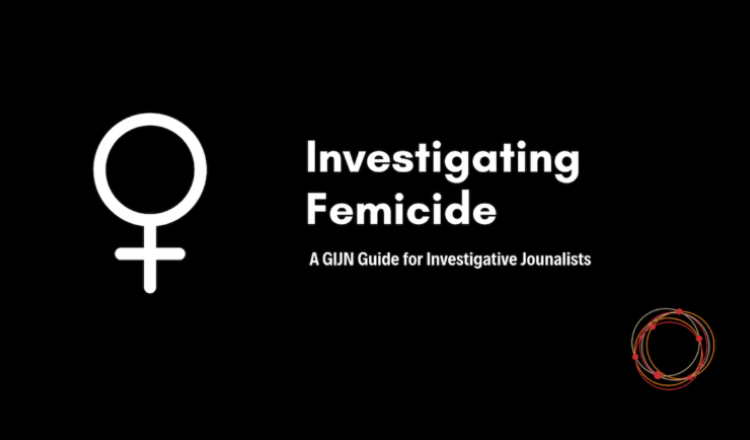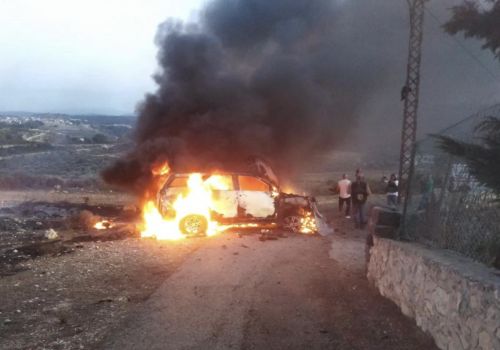Investigating Femicide: A GIJN Guide
2021-07-08 10:50

Investigating Femicide: A GIJN Guide
Femicide — the intentional murder of women because they are women — is a global problem. According to the UN’s latest estimates, 50,000 women and girls are killed each year by intimate partners or other family members. That’s 137 lives lost every day. This figure only includes the cases of women killed by a family member or partner and does not include the targeted killing of women and girls in the context of armed conflict or dowry-related killings. Experts say this is an under-reported number, as many governments around the world don’t report femicides.
But despite the numbers, many of these stories go unreported. This guide aims to help journalists understand what femicide is, find and understand the data available, and suggest which experts to interview.
In absolute terms, the region with the highest number of femicides by partners and family members is Asia, which had an estimated 20,000 gender-based killings at the time of the latest UN report, followed by Africa (with 19,000), the Americas (8,000), and Europe (3,000).
But looking at the rates of femicide in relation to the size of the population, the place where women run the greatest risk of being killed by their partner or a family member because of their gender is Africa, where the femicide rate is 3.1 per 100,000 women. In the Americas, the rate is 1.6 deaths per 100,000, followed by Oceania (1.3), Asia (0.9), and finally Europe where the rate is 0.7 per 100,000.
From the United Kingdom to Namibia, the United States to Turkey, protests against gender-based violence have increased in recent years, often sparked by particularly troubling cases.
Definition of Femicide
To understand how to read data on femicide, you must first find out how femicide is defined by those collecting the data.
While there are various definitions of the term, the various international bodies that work on this issue agree that it is “the intentional murder of women because they are women.”
In 2017, the latest year for which the UN has figures, more than 30,000 women were killed by an intimate partner. That’s 60% of all femicide killings. The second most frequent group of perpetrators are male family members — perhaps a woman’s father, uncle, or brother — sometimes aided by a female relative.
According to the World Health Organization (WHO), femicide differs from male homicide, as most cases “involve ongoing abuse in the home, threats or intimidation, sexual violence, or situations where women have less power or fewer resources than their partner.”
The European Institute for Gender Equality recognizes the following as femicide:
- The murder of women as a result of intimate partner violence by a current or former husband or boyfriend.
- The torture and misogynist slaying of women.
- Killing of women and girls in the name of “honor.”
- Targeted killing of women and girls in the context of armed conflict.
- Dowry-related killings of women.
- Killing of women and girls because of their sexual orientation and gender identity.
- The killing of aboriginal and indigenous women and girls because of their gender.
- Female infanticide and gender-based sex selection foeticide.
- Genital mutilation-related deaths.
- Accusations of witchcraft.
- Other femicides connected with gangs, organized crime, drug dealers, human trafficking, and the proliferation of small arms.

-
Global Study on Homicide 2019, United Nations Office of Drugs and Crime. Image: Screenshot
Where To Find Data
- Global data is published by the United Nations Office on Drugs and Crime (UNODC). The latest data available is from 2019.
- The United Nations Economic Commission for Latin America and the Caribbean (ECLAC — the Spanish acronym is CEPAL) and its Gender Equality Observatory publishes statistics on aggravated homicides due to gender in the region.
- Femicide Watch: A joint project of the UN Studies Association (UNSA) Global Network and the UNSA Vienna’s Femicide Team provides selected high-quality information.
- The national femicide observation center of the country you’re investigating, if one exists.
- The police.
- Activists who collate data.
Understanding the Data
- Experts agree that most numbers underestimate since thousands of cases occur under the radar or are not registered as femicides.
- Some common problems with data are: femicides aren’t recorded separately; when recording crimes the perpetrator’s sex isn’t always noted; in many rural areas crimes aren’t reported, or they’re reported manually; and by the time records reach police headquarters, they can be lost or mishandled. In some countries, the killing of women isn’t even reported — as it’s not considered a crime.
- To compare national rates, check how this offense is criminalized and how it’s recorded in each country’s legal system. For example, some countries will classify as femicide the deaths from female genital mutilation, or killings of female sex workers, or gender-related killings of women and girls in conflict situations.
- Some countries won’t use the word femicide, so look for the standardized term according to the International Classification of Crime for Statistical Purposes (ICCS classification): “Female victims of homicide perpetrated by intimate partners or other family members.”
- Educate yourself in how good or bad the data collection system is. Systems that work well need trained police officers and medical professionals, and to have reliable data that will distinguish and record the type of homicide, the sex of the perpetrator and the victim, along with the motive and the relationship between the two.
Other Resources For Data
In countries with scarce data, activists and non-governmental organizations have stepped in and collected information on their own. Here are a few examples:
- Mapping Femicides: Geotags the deaths of women killed by an intimate partner in Australia.
- Femicide Watch: The National Citizen Observatory on Femicide represents 40 organizations from 22 Mexican states.
- Feminicidio.net: A website devoted to news related to in violence against women. It also runs Geofeminicidio, an online application for documenting femicide in Spain and Ibero-American countries.
- Black Femicide (US): Collects media reports about the killings of African-American women.
- We Will Stop Femicide Platform: Collects data related to the deaths of women killed by men in Turkey. It is shared monthly as raw data.
Who to Interview
Experts
- Non-governmental organizations
- Social services
- Criminologists
- Prosecutors
- Police officers
- Feminist activists
- Health-providers and coroners
- Lawyers
- Academics
- Frontline workers
- Witnesses and neighbors
- People working at helplines and women’s shelters
Non-experts
- Surviving members of the family and neighbors
- Survivors of near-death attacks
The Risk Factors
Some experts say that femicide is preventable and that the gender-related killing of women is often the culmination of prior gender-based violence; that’s why it makes sense to also look at gender-violence statistics.
Here are a few of the risk factors identified by the WHO for perpetration and victimization related to femicide:
- Living in countries with significant gender inequality.
- Living in a place where there has been a reduction in government spending on health and education.
Also considered risk factors for perpetrating femicide are:
- Unemployment of the male partner.
- Gun ownership (especially in the United States and South Africa and in conflict and post-conflict countries).
- Threats to kill with a weapon.
- Forcing sexual intercourse on a partner.
- Alcohol and drug abuse by the male partner.
- Mental health problems of the male partner, especially for femicide-suicide cases.
- Prior intimate partner abuse.
These are the risk factors for being a victim of femicide:
- Pregnancy.
- Prior abuse by the perpetrator.
- Presence of a child from a previous relationship (i.e. not the biological child of the perpetrator).
- Estrangement from the partner.
- Leaving an abusive relationship.
Case Studies
- The Uncounted: Tortoise Media did a notable series on femicides in the UK, collecting public records from various police stations in the country to create data visualizations. They focused on cases where the surviving family or friends suspected the partner or ex as the perpetrator. Despite the fact that the UK is a world leader in open data, they found that no one knows how big the problem is, as many cases go unaccounted for in official homicide statistics.
- Twice Victims: Women Who Asked for Help during the Quarantine and Were Met with Indifference (in Spanish): A collaborative project by the Latin American Centinela COVID-19 journalism alliance on how during the pandemic women have been victimized by intimate partners, pimps, and officials. The members of the Centinela are del Centro Latinoamericano de Investigación Periodística (CLIP), Chequeado (Argentina), El Deber (Bolívia), Agência Pública (Brazil), El Espectador y La Liga Contra el Silencio (Colombia), La Voz de Guanacaste (Costa Rica), Ciper (Chile), GK (Ecuador), El Faro (El Salvador), No Ficción (Guatemala), Quinto Elemento Lab (Mexico), El Surtidor (Paraguay), IDL-Reporteros (Peru), Univision Noticias (US), Confidencial (Nicaragua) and Sudestada (Uruguay).
- More Than Two Thousand Women Have Been Killed By Men in the Last Seven Years (in Turkish): Great data visuals by Sahra Atila, where she analyzes the numbers of Turkish women victims alongside details about their cases.
- 59 Days of Local Media: How Is Male Violence Presented (in Turkish) by Şeriban Alkış, who used data visualization, maps, and scraping to collect data on the femicides that happened in the country in January and February of 2021.

- #SayHerName: The Faces of South Africa’s Femicide Epidemic. Media Hack and Bhekisisa published a data-based story on femicide, which highlighted the lack of media attention such stories attract and found that only 4% of cases of women killed because of their gender between 2018 and 2020 featured on national or local news. South Africa’s high femicide rate sees an average of seven women a day dying in the hands of an intimate partner or family member. The team created a map locating the murders by police precinct, highlighting the areas with the highest number of femicides.
- We Are the Dead: A months-long investigation by Maclean’s, the Canadian current affairs magazine, into intimate-partner violence revealed how systems, politicians, and individual people have failed women and girls. The story highlights how women of all socio-economic backgrounds can be abused and killed inside their homes. Maclean’s suggests the term “epidemic” is apt when describing intimate-partner violence given the social contagion it can wreak, with children the first collateral victims.
- Red River Women: Research by the BBC showed that aboriginal women are four times more likely to be murdered or go missing than other Canadian women.
- The Guardian’s Sunday sister paper, The Observer, is running a campaign called End Femicide. One of the stories focuses on homicides of women over 60. They found that many such cases are easily dismissed as accidents and are never investigated. According to data, half of older female victims are killed by their sons, grandsons, and relatives.
- Mechanics of a Crime Foretold (in French): A year-long investigative and multimedia project by Le Monde on the killing of 120 French women.
- Hidden Violence (in Spanish): An investigation on Colombian women killed or abused by partners in the police or military.
Books
- “Femicide in South Africa”: Nechama Brodie, a South African journalist and author, published a book on femicide in one of the countries with the highest murder rates and a femicide rate that is more than five times the world average.
- “Honour Unmasked”: Journalist and academic Nafisa Shah highlights in her book how the state justice system and informal processes of redress are mutually implicated in honor-related violence in Pakistan’s Sindh province.
Your Mental Health
These stories are difficult to cover and may be triggering for reporters who have experienced past traumas. Make sure you follow the good practices for caring for your mental wellbeing from the Dart Center for Journalism & Trauma.
Talking to survivors and family members is tough and you need to be prepared. Check out Marcela Turati’s tips on interviewing.
Other Resources
- A podcast about the importance of comprehensively counting femicide as part of a broader strategy to end violence against women and girls.
- Understanding and Addressing Violence Against Women: A WHO information sheet.
- Men Who Murder Their Families. What the Research Tells Us: Research by the UK’s National Institute Of Justice.
- Terminology and Indicators for Data Collection: Rape, Femicide, and Intimate Partner Violence: Information from the European Institute for Gender Equality.
- Sustainable Development Goals/Gender Equality: By Our World Data.










